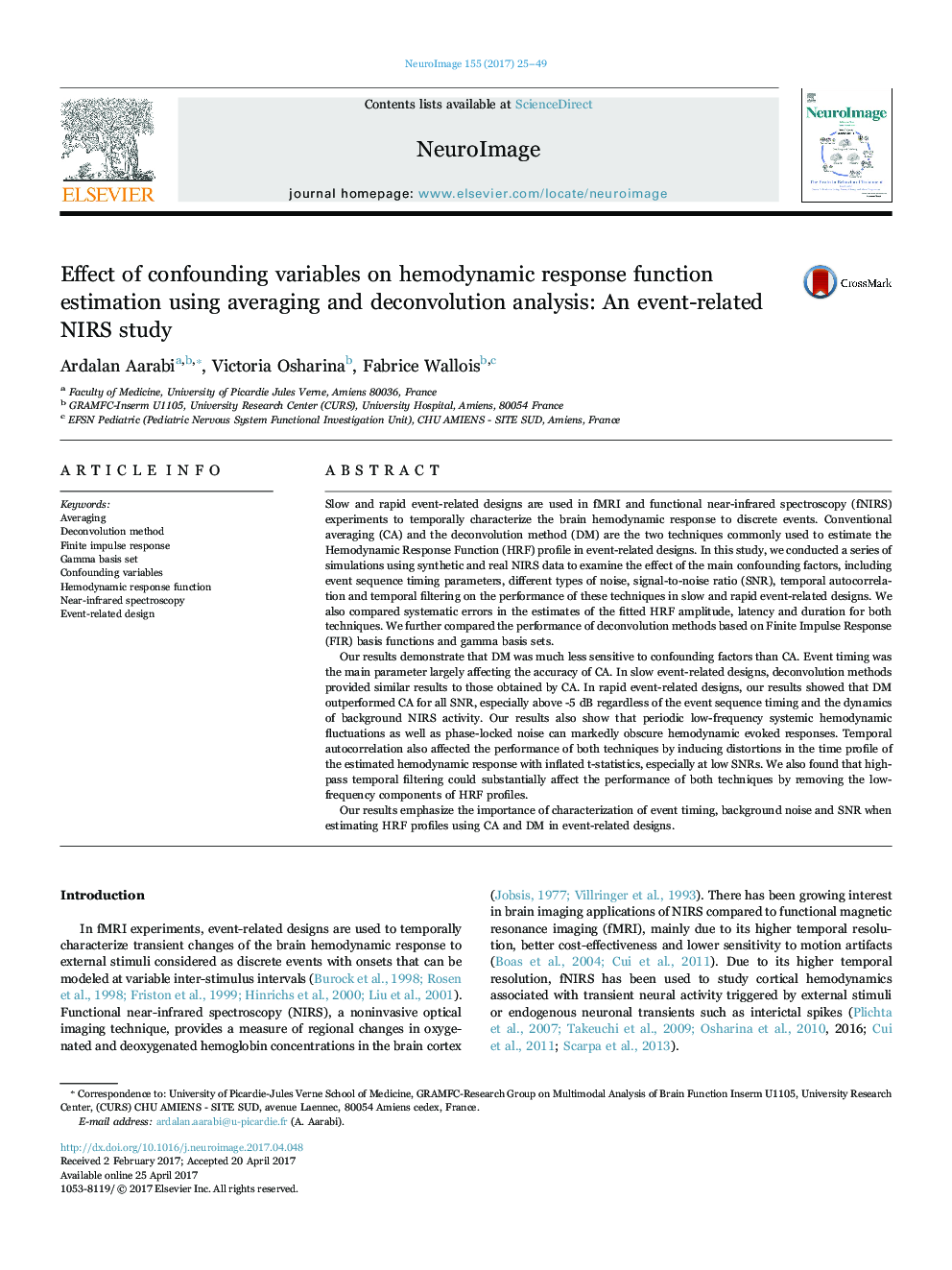| کد مقاله | کد نشریه | سال انتشار | مقاله انگلیسی | نسخه تمام متن |
|---|---|---|---|---|
| 5631118 | 1580855 | 2017 | 25 صفحه PDF | دانلود رایگان |

Slow and rapid event-related designs are used in fMRI and functional near-infrared spectroscopy (fNIRS) experiments to temporally characterize the brain hemodynamic response to discrete events. Conventional averaging (CA) and the deconvolution method (DM) are the two techniques commonly used to estimate the Hemodynamic Response Function (HRF) profile in event-related designs. In this study, we conducted a series of simulations using synthetic and real NIRS data to examine the effect of the main confounding factors, including event sequence timing parameters, different types of noise, signal-to-noise ratio (SNR), temporal autocorrelation and temporal filtering on the performance of these techniques in slow and rapid event-related designs. We also compared systematic errors in the estimates of the fitted HRF amplitude, latency and duration for both techniques. We further compared the performance of deconvolution methods based on Finite Impulse Response (FIR) basis functions and gamma basis sets.Our results demonstrate that DM was much less sensitive to confounding factors than CA. Event timing was the main parameter largely affecting the accuracy of CA. In slow event-related designs, deconvolution methods provided similar results to those obtained by CA. In rapid event-related designs, our results showed that DM outperformed CA for all SNR, especially above -5 dB regardless of the event sequence timing and the dynamics of background NIRS activity. Our results also show that periodic low-frequency systemic hemodynamic fluctuations as well as phase-locked noise can markedly obscure hemodynamic evoked responses. Temporal autocorrelation also affected the performance of both techniques by inducing distortions in the time profile of the estimated hemodynamic response with inflated t-statistics, especially at low SNRs. We also found that high-pass temporal filtering could substantially affect the performance of both techniques by removing the low-frequency components of HRF profiles.Our results emphasize the importance of characterization of event timing, background noise and SNR when estimating HRF profiles using CA and DM in event-related designs.
Journal: NeuroImage - Volume 155, 15 July 2017, Pages 25-49